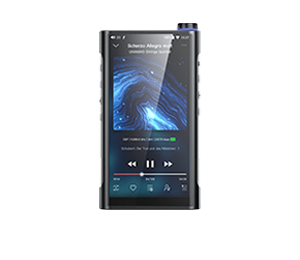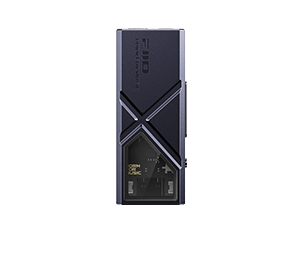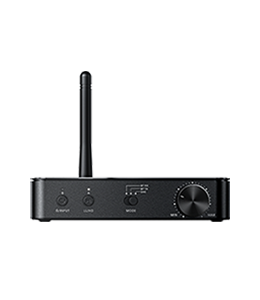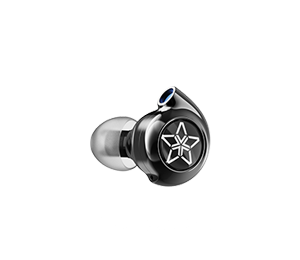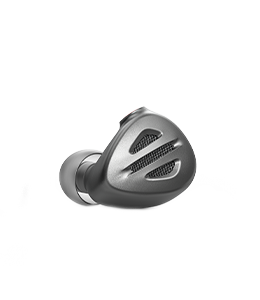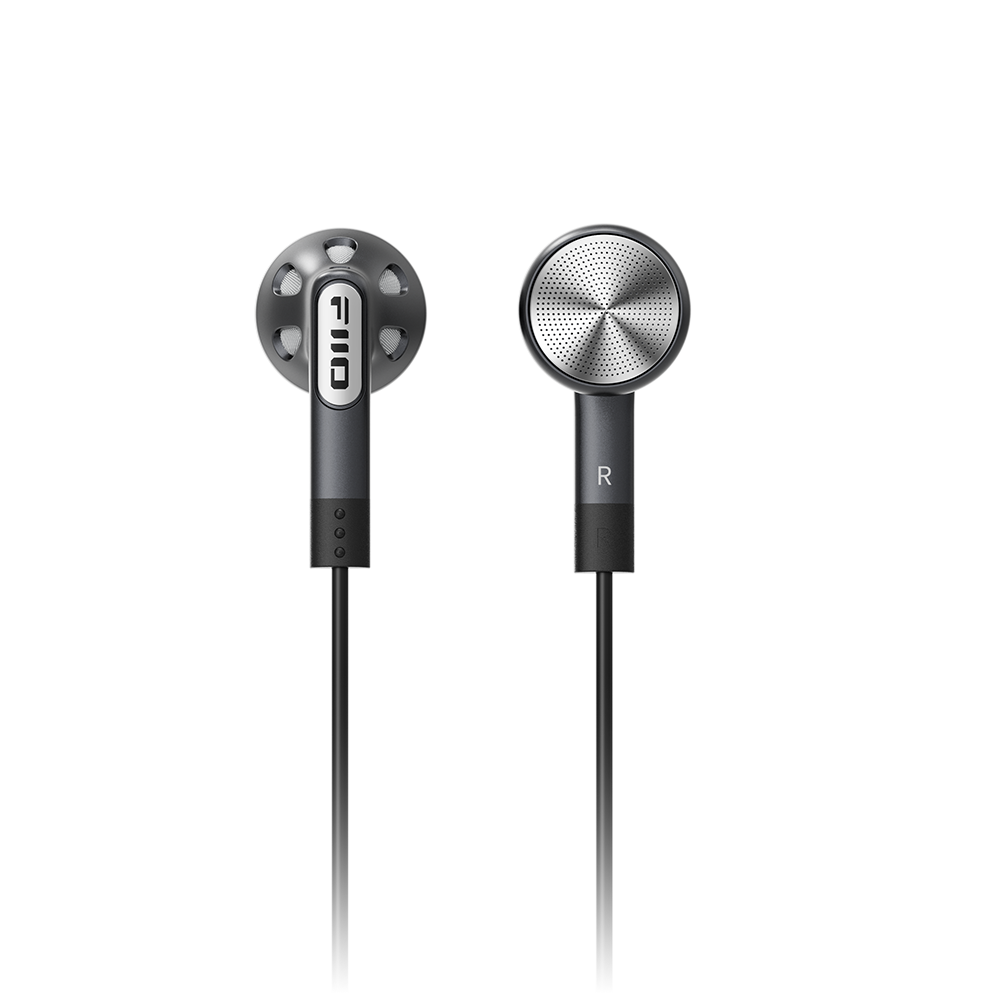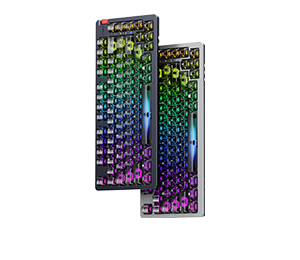REVIEW: FIIO M7 – BACK TO BASICS
Author:Lieven
Review from:Headfonia
→→ Read the original article on Headfonia:>> Click here

Disclaimer: The sample of the Fiio M7 was sent to us free of charge in exchange for this review. Fiio is a site advertiser and the sample doesn’t need to be returned after the review.
Fiio – M7
The Chinese based Fiio never stops innovating and it’s one of the most active companies when it comes to product development, and most of all, upgrades. This time they’re back with the M7 DAP, a portable player that goes back basics. That means the M7 is a simple and easy to use DAP without a whole bunch of features we’re used to getting with all the other Fiio DAPs, but that’s OK. You see, this is a DAP made for the regular consumer that just wants a normal DAP, a DAP that’s easy to use and that just plays the music in a very good way.
No, you won’t get an endless list of configuration options, no you can’t customize the menus or download other apps on the M7. The Fiio M7 is a basic DAP like in the good old days, but done so in a perfect way. And it has a FM radio again, how awesome is that?!
The M7 being a consumer DAP, it also doesn’t come with WIFI. That means, no Tidal, no other apps, no DLNA or anything like that. Back to basics here means the MicroSD card is very important as it will hold all your music (the M7 only comes with 2GB of internal memory) and you’ll have to use it to update your M7’s firmware.
The web page of the M7 can be found right here, on Fiio’s website. We also learned that Fiio will be launching a new DAP at Head-Fi’s Canjam London this weekend, so do keep an eye on our Instagram and Facebook account where you will see it first. No details are available as of now, only this drawing

Maybe a new M-series DAP?
Design & Build Quality
The Fiio M7 is available in silver, red, blue and black. The version we received is the black one and it is beautiful. The M7 doesn’t only look nice but it feels nice as well. The case has a smooth and slick finish to it which makes it a very sexy DAP. At the same that same finish – when not using a case – will make the M7 a bit slippery when in your hand, so be careful if you’re not using any case, like me.
The build quality is exceptionally good and I can’t spot any flows whatsoever. There are no sharp edges, the buttons feel sturdy and the volume control wheel as well as the 3.5mm output and USB-C port, are perfectly integrated in the case. That being said, the screen sticks out of the body for like half a millimeter or so. Drop the M7 face down on the ground without a case and you’ll probably bust up the screen badly.
The new Fiio M7 DAP measures 52mm×109mm×13mm and it weighs only 116g. That means it’s rather small and easy pocketable.
All in all the M7 has an excellent design, I really dig it.
Lay Out
The pocketable Fiio M7 is extremely easy to use and a one-handed -and even blind – operation is no problem at all.
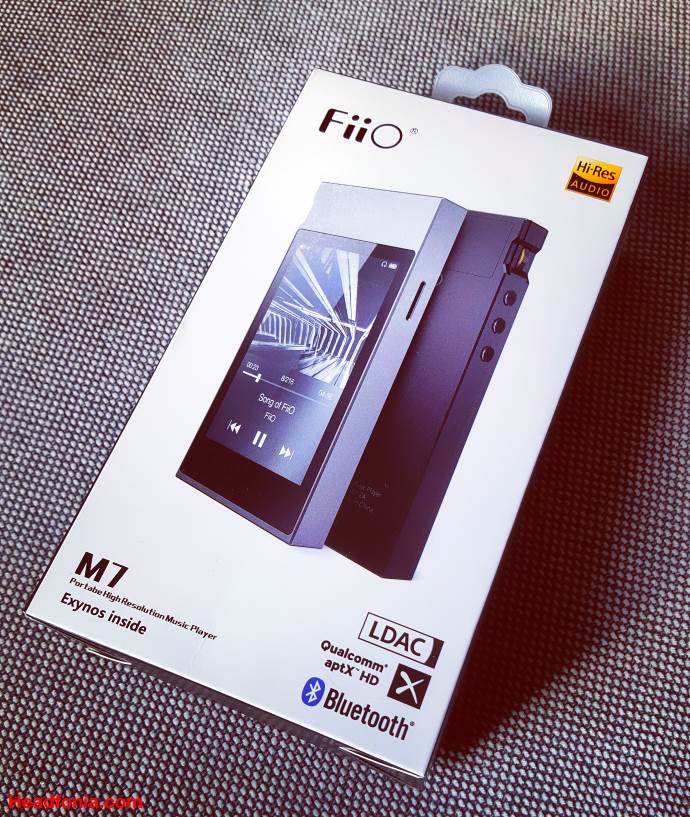
On the left side of the player we from bottom to top have the Next – Play/Pause and previous buttons. Above that there’s the small volume wheel. Even though it’s small, it offers a good grip and it’s extremely easy to rotate. You can also feel the clicks while turning it and setting the exact preferred volume is no issue at all.
On top of the player you on the left have the power button. It’s a small round button with a red circle around it and it has a small blue LED integrated in the middle. The blue LED just shows you the M7 is powered on. On the right side of the top you have the 3.5mm output which also serves as line-out. While Fiio is now a big advocate of the 2.5mm balanced output, this M7 consumer DAP only comes with a single 3.5mm port. The reason is simple: normal consumers probably have never ever heard of 2.5mm TRRS balanced ports, so yeah, logic.
On the right side of the player you only have the MicroSD slot and on the bottom there only is the USB-C connector to charge the M7 and to connect it to an external DAC. The back only has the Fiio logo printed on it, together with some info about the player as well as the certification labels. On the front of the player you just have the 3.2inch, 480 x 800 display with image zoom support. It’s a really nice screen but as I said, be careful with it when not using a case, as it does stick out a little.
The M7 – Inside
On the inside of the Fiio M7 we have a nice Samsung Exynos 7270 SoC processing chip (system on chip). One of the positive points this results in is that it makes everything smaller and it allows you to foresee more space for better cooling and a bigger battery to improve play time.
The M7 also features a 6-layer multi-stage HDI PCB. It’s the type of board that is used in the new smartphones and it only is 0.8mm thick, allowing more functionality in the body of the M7.
For the Bluetooth transmission – basically the only real feature the M7 has besides the radio – Fiio chose the Samsung BT 4.2 chip which offers aptX-HD audio codec support. It also supports Sony’s LDAC wireless audio codec, so nothing but good news there. For the radio reception Fiio chose the Si4705 FM chip which uses your headphone as the antenna.
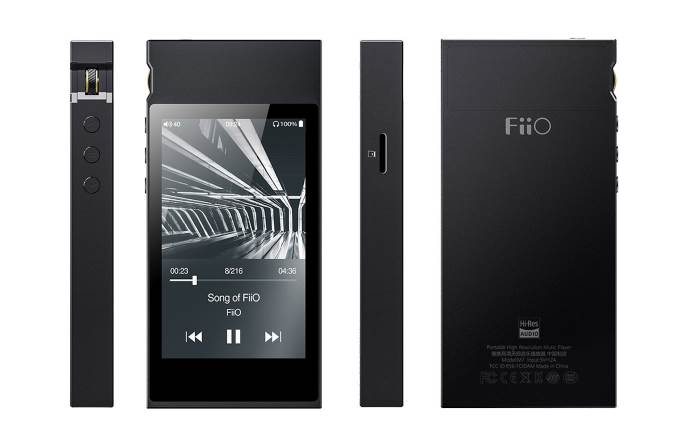
The perhaps most important chip for you inside the M7 is the ESS Sabre 9018Q2D chip which covers our audio needs. This specific chip also needs less space and less power and that shows in the impressive playtime the M7 offers. This Sabre supports up to 384/32 PCM and 11.2MHz DSD (DSD256). APE/WAV/FLAC/WMA/OGG/AAC/ALAC/MP3 are the filetypes you can use. The M7 is said to perform best with ear- and headphones between 16 and 100Ohm.
The Fiio M7 also has the High Res audio certification from Japan but there are no yellow stickers on the DAP’s body this time round. It’s mentioned on the back of the unit however.
Memory-wise the little M7 doesn’t really impress with its 4GB. From this 4gb, only 2gb can be used to store your music locally. The Fiio M7 does have one MicroSD slot and it accepts cards up to 512GB. Personally for me, that’s more than enough.
Battery-wise as said the M7 really excels. The 1180mAh battery in combination with the Exynos 7270 allows the device to deliver 20h!! of play time and 40 days of standby. Now that’s impressive. The batter charges in under 2.5h over USB-C.
Accessories & Price
The Fiio M7 sells for only $199.99 and that simply is an awesome price taking into account what we’re used to seeing nowadays. On the other hand, this is a really basic DAP that doesn’t allow streaming, that doesn’t have a lot of storage and doesn’t even come with WIFI.

Accessory wise the Fiio M7 doesn’t really shine and all you get is a basic USB-C cable and an awful plastic see-through case which I refuse to use. Yes it will protect your M7 but it also makes it quite ugly. For the price I don’t expect a leather case in box but leather cases are sold separately for $19.99. So all in all a basic package.
The article continues on Page 2, after the CLICK HERE, or by using the jump below
rmware/ User Interface/ Usability
Even though the menu structure seems endless (see next topic) the Fiio M7 is extremely easy to use. And with that I don’t only mean the firmware but also the physical buttons. The only downside is that you might be used to some swiping actions from your full Android DAP/phone, and those will not work here (like top down or left right & right left swiping). It’s a limited Android functionality which has been implemented but for this player it’s sufficient.
The M7 does have smart swiping though. If you swipe up from the bottom left you go back one level (previous screen). If you swipe up from bottom right, you go back to the home screen. All the button functionalities can be done on the screen as well, except for powering the player on/off. The screen size and the resolution is perfectly fine: everything shows in a clear way and there are no buttons that are too small to touch.
Navigation between screens, switching tunes and browsing all feels fast and natural. The screen and player are very reactive though it isn’t the fastest handling player on the market either. It’s pretty good though and there really is nothing to worry about here. Same goes for the boot-up time including the Fiio Music app: it’s not the fastest but it certainly isn’t slow either. (though we always feel it has to be extra fast, as we can’t stand waiting, right?). A thing I really like is how Fiio designed the lock screen with the image art and the buttons at the bottom. Sure you can use the external buttons but if you quickly want to check who or what you’re listening to (and switch or pause a song), you don’t have to unlock the player for it to do so. That’s nice.

Something that could be improved is the reading of the 200GB card I have in there but looking at all the other players in my possession, Fiio still scores on average, or maybe a little below. Luckily I don’t change SD-cards very often.
Fiio has also included a 10 band equalizer and it has 9 pre-set configs and one you can set yourself. I’m not the EQ’ing type of guy to, so I have to admit I haven’t experimented a lot with it.
Something else to mention user-wise is that the M7 doesn’t have WIFI and as a result you can only update it by downloading the update file on the Micro-SD card and doing it manually via the menu. It’s a bit annoying as we all easily got used to updating over the air, but at the same time it’s not really an issue .
One thing I really like is the fact that the M7 comes with an integrated FM Radio. Fiio has implemented the Si4705 FM chip to do that and it actually uses your headphone as antenna. The chip is able to cover a broad range from 76MHz to 108 MHz. Yes, FM radio is old school but I kind of like it and it brings back memories of my Sony FM Radio/cassette player. But to be really honest, I haven’t used it a lot as the reception in the train to work just is really bad.
To finish of this topic I have two more great things and one I can’t say I like, but first the good. Fiio implemented a 60-step volume range and for most of the ear-and headphones that gives you enough margin to set your listening volume exactly right. The second thing is the USB-C port, as I just love the fast charging and file transfer. Now something I – as a watch lover – can’t accept is the fact that each week your M7 clock will be “off” by 35 seconds. Each week! That’s huge! Call me crazy for caring about this, but if you know how precise clocks can be and normally should be, this is mind blowing. Ok I admit, it might not be the most important, but still…

Menu Structure
After booting the player you end up in the main menu structure. There are 6 options:
Fiio Music
FM Radio
File Management
Gallery
Technical support
Options
The Radio station menu only has a few buttons: Previous station / Change frequency down / Add to list / Change frequency up / Next station. By clicking the signal antenna on the screen the M7 does a Frequency sweep and saves the strongest bands.
The File management menu is split up in 3 main categories: Songs, Picture and Document. There also is the option to browse both the internal and external memory in a folder structure. Via this menu you can start a song of your choice as well, as it will open Fiio Music.
In the Gallery menu you can look at all the image files that are in the internal and external memory, like the album art. You can either choose big tiles or smaller ones with the file name next to it.
The Technical support menu has three main options: Firmware update (via the SD-card), a FAQ and a quick start guide.. you can also consult Fiio’s contact info here.
The Settings menu has six sub menus:
Bluetooth: On/off/scan/connect
Audio: Output selection (PO or LO), Wireless codec, Balance and in-line remote
FM Radio: Broadcast region
Key-lock settings: Choice of buttons to work
General: about, Power off timer, Brightness, Wallpaper, Sleep timer, Date & time, Language/input and Screen lock.
Factory data reset.
The most important one of course is the Fiio music menu which you need to listen to music. One launched you will get to the main Fiio Music screen where you also have 7 options: All songs / Artist / Album / Playlists / Genre / Folder and more Settings. You can also access the recently played songs, most played songs and recently added songs. Inside these menus you have different display and sorting options.
When you’re in the now playing screen you can also tap the screen for more info and options. The screen will give you the basic file info such as the song name, album name, artist, file type and bit rate/depth. The menu that popped up will also allow you to set the EQ (see above), the play sequence, add it to a playlist, add to favourites and more. More being the delete track option & track info (everything!)
When you click the 7th Setting option you get another….15 options! Let me quickly sum them up for you: Timer On/off – Scan for songs – Resume (song/position) – Gapless playback – Play through folders – Auto Update – Fixed volume – DOP – Theme – Lock screen art – Lock screen Lyrics – reset Database – Help – Version info and Exit.
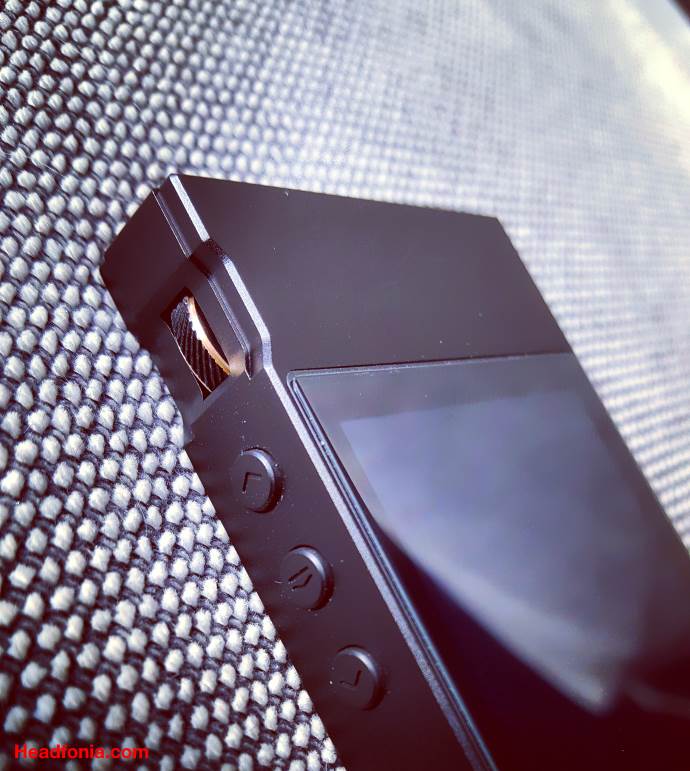
That’s a lot of menus for a basic player if you ask me! Yet at the same time the structure is logic and pretty straightforward.
USB Digital out / Line Out
In comparison to most Fiio and other DAPs, the cute M7 doesn’t work as USB DAC. It however is possible to hook it up to an external DAC and use it as portable/external source only. Fiio only guarantees it has a stable performance with their own Q5 and Q1mkII units but we of course had to try it with the Chord Mojo and the RHA DACAMP L1 as well.
The Fiio M7 immediately and perfectly connected to the Chord Electronics Mojo from the very first try and the screen shortly displayed a message saying a USB-device was connected. The Mojo also displays the correct colours for DSD and all the other file formats and I experience no hiccups whatsoever. For me the Fiio M7 and Chord Mojo combo is perfectly stable. Same story for the RHA DACAMP L1. The L1 immediately got recognized by the M7 and it works flawlessly and stable.
It even connects right away to the Astell&Kern ACRO L1000 DAC/AMP combo so it looks like the M7 is an easy source to pair up your (portable) DACs with. Great news.
The 3.5mm headphone output can also be set as a 3.5mm line-out to an external amplifier. It’s an option I rarely use and if I do it most of the time is with the SP1000 and AK connect, going to one of my desktop amps if I’m to lazy to hook up a USB cable to my desktop laptop/DAC. In the good old days it was something I used all the time in combination with a portable external amp but the DAPs nowadays have gotten so good that the portable amp market has become really niche.
The part on sound starts on the next page, after the CLICK HERE
Sound
Fiio’s marketing department doesn’t really describe anything related to the sound on their website. The only thing we can find there are technical features and the only mention related to sound is this:
“Incredibly low noise floor”
And as you’ll read later on in this article, they actually are right about it. This however, doesn’t tell us anything about what the M7 sounds like.
The first impression you get when listening to the M7 is that it is a very full sounding DAP with full bodies bass, mids and even treble. The balance between these however is quite nice and your music is presented in a smoother, slightly warmer way in order to make everything musical sounding. The Fiio M7 is very easy to listen to and with its soft and musical performance it indeed is a DAP of which the sound signature will please the masses. Of course Fiio tuned it this way on purpose as the regular non audiophile consumer likes this kind of presentation.
The bass is somewhat lifted but not too much, the mids are smooth and musical and treble soft yet energetic. The presentation is very clean (no background noise as with several other Fiio DPAs) and engaging. Sound stage wise the Fiio M7 performs pretty good for its price but it isn’t the widest, deepest or most spacious sounding DAP on the market. The Fiio M7 for me finds itself between entry-fi and mid-fi and taking this into account the Fiio M7 performs above its price point.
Bass is always present yet it never becomes overpowering. It isn’t the most detailed and refined or layered bass but it’s bass which is easy to like, with good speed and impact. If you’re in to pop, R&B, and all those other mainstream genres( no offense) you probably like some good bass and that’s exactly what the M7 will deliver. Don’t expect audiophile grade bass texture and depth, it’s fun over quality, though the quality is perfect fine for the level the M7 is playing at.
The mids, just like the bass, are full bodied and easy to like. The presentation is smooth and a little warmer though it never becomes too thick or slow. Mids flow perfectly from the bass and there isn’t a particular focus on anything. The voices blend perfectly in and overall the mids bring you a musical sound which is really easy to like.

Treble is full bodied and easy to like. That means it has enough energy to contrast the bass and mids and keep everything lively, but you don’t have the best extension, detail or speed. Treble again is tuned for the general consumer which doesn’t necessarily likes strong treble. For a lot of people treble quickly becomes offensive when it’s peaky and extended, but there’s nothing to worry about here.
All in all the Fiio is very musical and fun to listen to. Its sound and performance is addictive and engaging. It’s the perfect DAP for on the go or when running or working out as it’s just pure fun and enjoyment. At the same time the Fiio M7 has a very good technical level for its price point. Looking at the Fiio DAPs that are still available the new M7 gets the bronze medal, right after the X5III and the X7II, but more on that in the next chapter.
Vs Fiio X3iii and X5iii
The Fiio X3iii is available for $189.99 and that makes a direct competitor within Fiio’s own ranks. For only $10 more you get the M7 with the bigger touch screen and it’s ESS Sabre 9018Q2D (M7) compared to the double PCM524 of the Fiio X3III. UI-wise the X3III uses the old scroll wheel, so it has no touch screen and even less customization options compared to the new M7. Sound-wise The X3iii is more noisy where the M7 is cleaner sounding. The X3iii has a darker and slower presentation and doesn’t sound as clear as the new Fiio M7. Going from the M7 to the X3iii is tough but once your ears and brain adjusts to the sound, the typical bass and the musicality than the X3iii still is very enjoyable. The M7 though has better precision and speed and presents the music in a more spacious way, with lighter bass. Coming from the X3iii you’ll feel a veil has been lifted and you’ll experience a higher quality sound with less noise and more clarity and detail. The M7 just sounds so much more natural and wide. It’s a’ easy choice for me.
Fiio’s X5iii ups the game with a better sound level compared to the X3iii. The X5iii sports an AK4490 chip and that’s definitely a step up looking at its little brother. The only thing I still don’t like about the X5iii is the level of noise it produces. User Interface-wise the X5iii of course is a pleasure to work with as you get a large touch screen in combination with a customizable Android firmware. The X5iii nowadays can be bought new for only $329 and that brings it very close to the Fiio M7. The big difference here is that the X5iii does allow you to customize it. You can install Tidal, stream from a DLNA source over Wi-Fi and so much more. So while they usability-wise are at the same level, the X5iii easily has it beat for what concerns versatility. Sound wise the M7 to me sounds more clean (less noisy) but these sound-wise are actually fairly close to each other. I would still say the X5iii performs best as it’s clarity level is a bit higher and there is slightly more detail in combination with a little more extension. The X5iii is the more audiophile one, where the M7 just is the really good sounding fun one.
Conclusion (again) X7ii>X5iii>M7

Vs the competition
When looking at the competition and the DAPs in my collection, the Cayin N3 and N5ii as well as the Hiby R3 are the DAPs to look at. The N3 goes for $149 and is $50 cheaper than the M7. The N5ii is selling for $369 officially though I have seen it go for only $299 at the moment with a free leather case. So it’s about $100 USD more expensive right now. The Hiby R3 costs around $299 and that makes it a direct competitor.
I really liked the little Cayin N3 when it came out and I said it outperformed its price level. Navigation and looks-wise it wasn’t the strongest but connectivity and sound-wise it really was/is a winner. The N3 easily convinced us to put it on the list of recommended DAPs. Unlike the M7, the Cayin N3 doesn’t have a touch screen. Customizing the experience or streaming from Tidal isn’t possible on both, but the M7 wins it in the user interface and usability category. Sound-wise the little N3 sounds darker and coming from the M7 you immediately miss the clarity. The N3 is darker, slower and more veiled. Its bass is bigger and not as tight. The overall sound of the M7 is faster but the mids are very similar except that the vocals in the N3 are more forward and distant sounding where they blend in more with the M7. The treble section in the N3 is energetic but rather dry compared to the Fiio’s treble which is more dynamic and extended. The M7 sounds richer, wider, more spacious and it does everything without less effort. The N3 is a great sounding little player for its price, but the M7 just beats it in so many categories, including sound.
The Hiby R3 probably is the biggest competitor to the M7. The R3 looks stunning and has an awesome and excellent touch screen. The R3 is also limited when it comes to customization but you can stream from Tidal with the R3. Sound wise both of these are very much alike but the M7 is a bit thicker sounding from top to bottom. The clarity in the R3 is even higher than in the M7. In the mids section the voices are more forward and overall you get less warmth and smoothness. The R3 also is extremely musical but it has more detail and a higher level of technicality. The treble section of the R3 is also further extended and more lively. If you’re more into the typical audiophile tuning you’ll probably prefer the more spacious and precise R3 but for the general consumer the heavier bass, softer presentation and easier to like treble are probably more popular. The Fiio M7 is good but the Hiby R3 just is incredible for its price. Sexiest DAP of the year? Possibly so.

The Cayin N5ii is another player that made it to our recommended list. It’s Android and fully customizable, has a nice touch screen, double SD slots, etc. It far outperforms Fiio’s new M7 UI and versatility wise (streaming, and much more). Sound wise the N5ii is more neutrally tuned and there’s no focus on bass and body like in the M7. Treble also is further extended and you get a wider and deeper sound stage with a more dynamic sound. The level of clarity is higher and the presentation is cleaner with better a better instrumental separation. Cayin manages to keep the presentation musical but the Fiio M7 does so with a smoother and warmer presentation. These are quite different sounding but the normal consumer would probably prefer the ticker and bass heavier sound of the M7 over the more audiophile sound from the (technically better) Cayin N5ii.
End Words
Even though the Fiio M7 isn’t the typical audiophile DAP, I have really enjoyed using it to get to work and back home. Yes, it’s a “back to basics” device but it comes with an FM Radio, looks great and most important of all, it sounds more than just good. I’m pretty sure a normal consumer will be blown away with its performance, both in usability as well as with its sound.
At the same time I’m convinced that even the most hardcore audiophile will be genuinely pleased with the M7. For only $199 you get a perfectly working and good sounding DAP in return. It’s a “no worries” DAP that goes back to basics, but it does that perfectly so. Its sound signature is mostly musical and very easy to like but at the same time it has enough detail and clarity to keep things qualitive and entertaining.

And then there’s the new DAP Fiio is presenting this weekend at Canjam London…I wonder what that will be…
Specifications
The full list of specifications can be found on Fiio’s website right here: http://www.fiio.net/en/products/89/parameters




